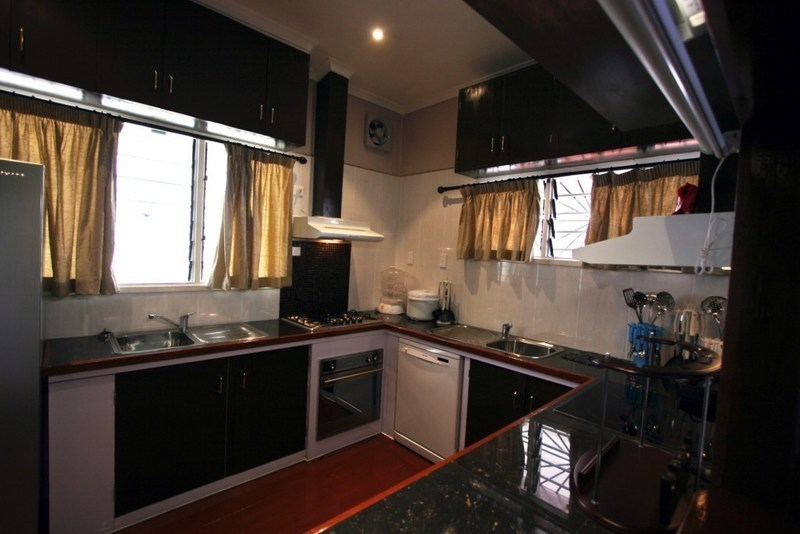Pre-qualification and pre-approval are real estate financing terms that are synonymous with the loan process, and each varyingly punctuate the level of commitment a lender has with a customer/buyer.
Unfortunately, at least a majority of us here in PNG aren’t really intune with the meaning of these concepts; either we’ve heard about them but never gave much thought to their differences, or we just couldn’t make time to understand their existence and how they affect the home buying process.
Nonetheless, in this article we’ll document the differences between both terms and focus on their appropriation in a home buying process. The thing to keep in mind is that a slight misunderstanding of their differences can cause the home buying process to stall.
So the aim of this article is to make sure you understand both terms to their core, and when they’re used interchangeably in a home buying process.
Pre-qualification
The prequalification, more or less, immediately comes into view the moment you find yourself in a home buying process.
It's not uncommon for many home buyers to avoid a loan/mortgage with an overwhelming intention to buy a house. Once the inclination is there, getting a loan becomes a prerequisite in the home buying process, because you will want to know if you're eligible for a loan, and what type of loan will you qualify for, respective of your credit history and financial status.
By the rights vested upon lenders, once your loan application has been submitted, they (lenders) will proceed to clarify the following questions:
-
How does your credit look?
-
How much house can you afford?
-
What type of loan will you be using?
On average, your credit history or credit rating score is the overriding factor in this story, as it will help determine your eligibility to get a loan, what type of loan suitable, or neither; hence, your strong advocate or your nemesis.
Mind you, the lender will pull your credit history/score to pieces, to weigh your eligibility, and a handsome score of say, 700 or better, will go as far as qualifying you for the loan in question. It’s also at a position where the interest rates will gradually shift-shape for the better.
When all is said and done, you will find that a conventional loan normally attracts huge down payments. This is why loans such as BSP’s First Home Ownership Scheme are popular among those borrowers who have grasped its purpose.
Loan Limits
In hindsight, with every other loan like the FHOS, there are drawbacks. For one, they have limits, and for the other, they aren't suitable to all property types and developments. For instance, Anitua properties are FHOS approved, compared to several other developments.
But this shouldn't be a major concern, although it's worth the mention, because your real estate agent or lender will have you covered in terms of professional advice. What should be of importance here is your understanding of prequalification.
The point is each loan type, First Home Ownership Scheme or not, comes with individual, unique limits; nonetheless, prequalification remains a force to be reckoned with in each case. Your cognizance of these limitations will be clear the sooner you reach the prequalification stage.
Being pre-qualified means knowing:
-
What type of loan are you going to get? Traditional or FHOS?
-
How much cash, if any will you need to put down.
-
What’s the plan for paying closing costs?
-
Any limitations on the type of property you can buy.
The next step that’s readily on-hand to greet you in this story is the pre-approval. But before long, you must begin your journey with properties that directly or indirectly open to the type of loan you’ve pre-qualified for.
For instance, once a home seller accepts your offer, the property in question is taken off the market; provided there’s proof of your pre-qualification, because anything less will not render the sale close. In other words, if the lender disqualifies your loan application, the seller will not take the house off the market.
However, this is also one moment where the seller can easily become emotional (seller's remorse), and may actually ask to keep the earnest money, instead. But not unless the agent, acting on behalf of the buyer, effectively resolves this problem and ensures the earnest money goes back to the buyer.
The best practice, then, is to take pre-approval by the horns.
Pre-approval
Pre-approval is the stage at which you've submitted a detailed loan application, and the lender has:
-
Sighted your application
-
Agrees with what you’ve provided
-
Not yet given the full approval
For the most part, a pre-approval paints a clear picture of the maximum funds available for the taking, helps you negotiate with certainty, and if you're involved in an auction, you'll be bidding with increased confidence.
However, the surprising thing with a pre-approval is that it’s not a necessary evil in a home buying process. But it does make life easier for the borrower, because of its power to bring you closer to your new family home, or dream investment property.
How Pre-approval works
Pre-approval is the lender’s commitment that you qualify for a particular loan type and amount based on your income and credit.
If everything looks good, the lender will generate a pre-approval letter and a “Good Faith Estimate of Settlement Costs”. These are important documents to have when shopping for a home as they prove to both sellers and their agents that you have the means to buy their house. These documents are generally good for 60 to 90 days.
The approval letter is a letter from the lender stating that based on the information they have, you qualify for a loan. This letter also gives the amount of the loan you qualify for.
A good faith estimate is a standard form that outlines and discloses the fees associated with your loan. Lenders are required to provide this document.
At this point, you are “pre-approved”. The lender waits for us to send them a contract for a particular property. At that point, they start to work on getting a full loan commitment. Full Loan Commitment Requires:
-
Contract on Property
-
Appraisal on the property
-
In some cases, the Inspection Report
-
Updated paycheck stubs for the months before closing.
-
Bank statements for the months before closing.
Pre-approval is the lender’s way of saying they are willing to loan this person X amount of money. It now depends on the house they want to buy.
The appraisal, and in some cases the inspection report of the property, will determine if the lender is able to make a full loan commitment to the buyer. In other words, are they loaning on a good investment? If the buyer defaults and the lender has to take the property back, will the lender be able to resell it for the amount they loaned on it?
No matter what type of market, it’s always wise to start the home buying process with prequalification and preapproval. This path gives you, the buyer, more leverage.
Disclaimer
This article is meant for informational purposes only. Hausples digs into the details of a specific topic and teaches its readers all about how the real estate industry operates. Therefore, not all articles are intended to be construed as financial, or investment advice. Hausples encourages you to reach out for professional help regarding your own real estate situation.











Comments